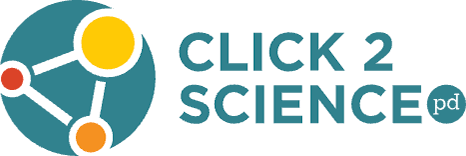Tips for Using Meeting Guides

An Effective Professional Development Plan
- Aligns with program goals and quality measures, targets specific skills or competencies, and identifies intended outcomes.
- Incorporates features and attributes of effective professional development and actively engages learners.
- Draws on an array of approaches and methods to incorporate the strategies best suited to the intended outcomes.
- Extends over time and allows staff to practice new skills or competencies until they are comfortable with them.
- Helps your program build a culture that values program quality and ongoing improvements that can empower staff to seek opportunities to develop themselves, as well as engage in the professional development sessions you lead.
Prior to the Sessions
- Select a meeting resource with an engaging or thought provoking activity. Focus on one skill at a time and continue to build on what your staff has learned when introducing new Click2Science skills.
- Review the meeting resource and make a plan for when you will use it.
- Gather the supplies or equipment you will need to conduct the session.
- Communicate with participants and let them know what you expect and what they need to do to prepare for the session. You can use the sample email in the training guide.
During the Sessions
- Communicate to your staff that this is part of an ongoing professional development plan.
- Keep in mind that the goal of professional development is to improve program quality, not just to convey specific content.
- Always take time for learners to reflect on what has been learned and how it can be applied. This is more important than covering all the content.
After the Session
- Evaluate how the session went and make adjustments as necessary for your next professional development experience.
- Follow-up with learners as suggested in the meeting guide and complete any other follow-up you committed to.
- Encourage staff to take the time for professional development. While these micro-trainings are short, staff should reflect upon the experience and practice using the skills when leading STEM activities with youth to make them meaningful.
More Resources
- Bowie, M., & Bronte-Tinkew, J. (2006). The Importance of Professional Development for Youth Workers. Child Trends, 2006-17. Retrieved from http://www.childtrends.org/wp-content/uploads/2006/12/child_trends-2007_06_15_rb_prodevel.pdf
